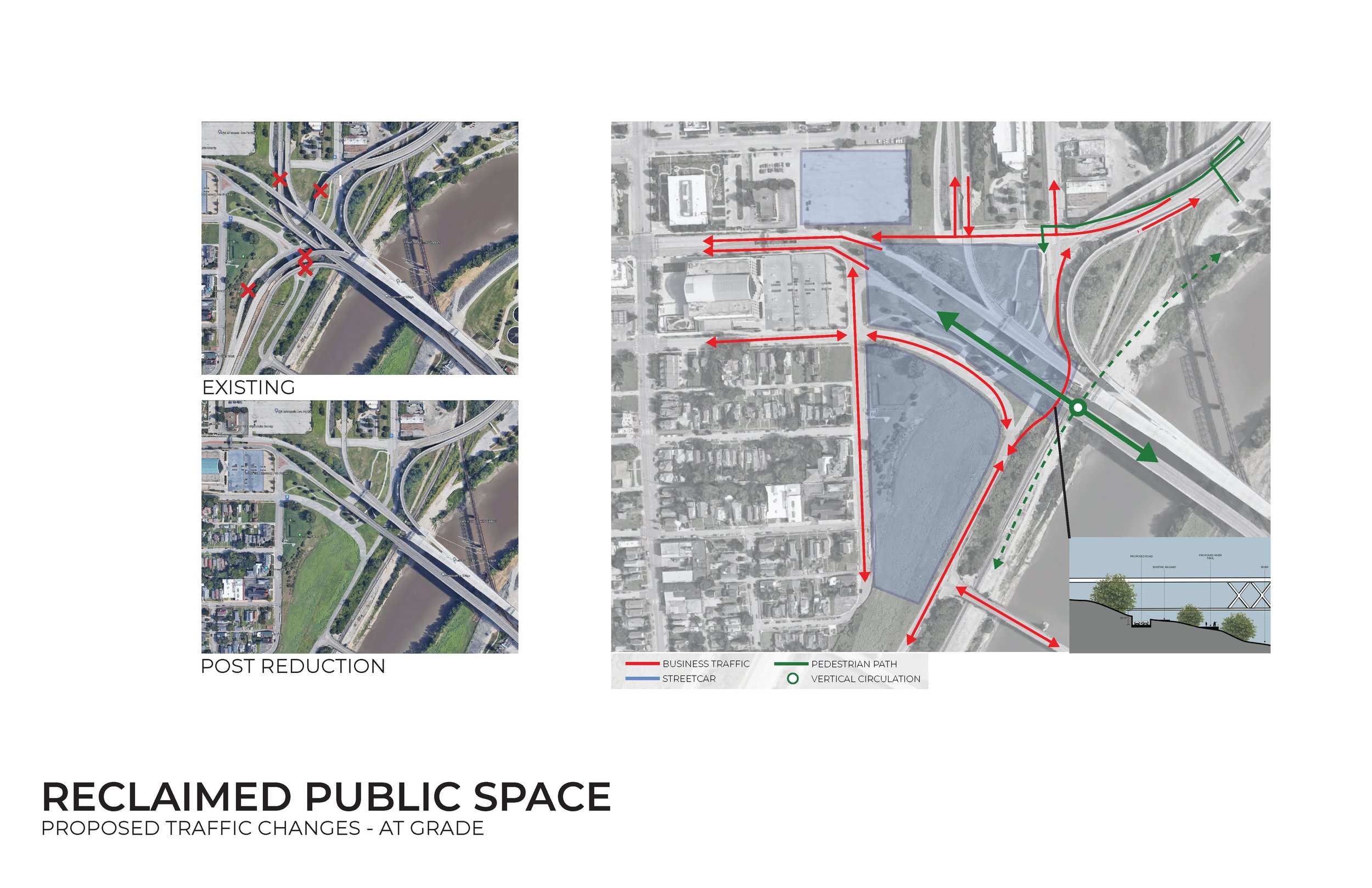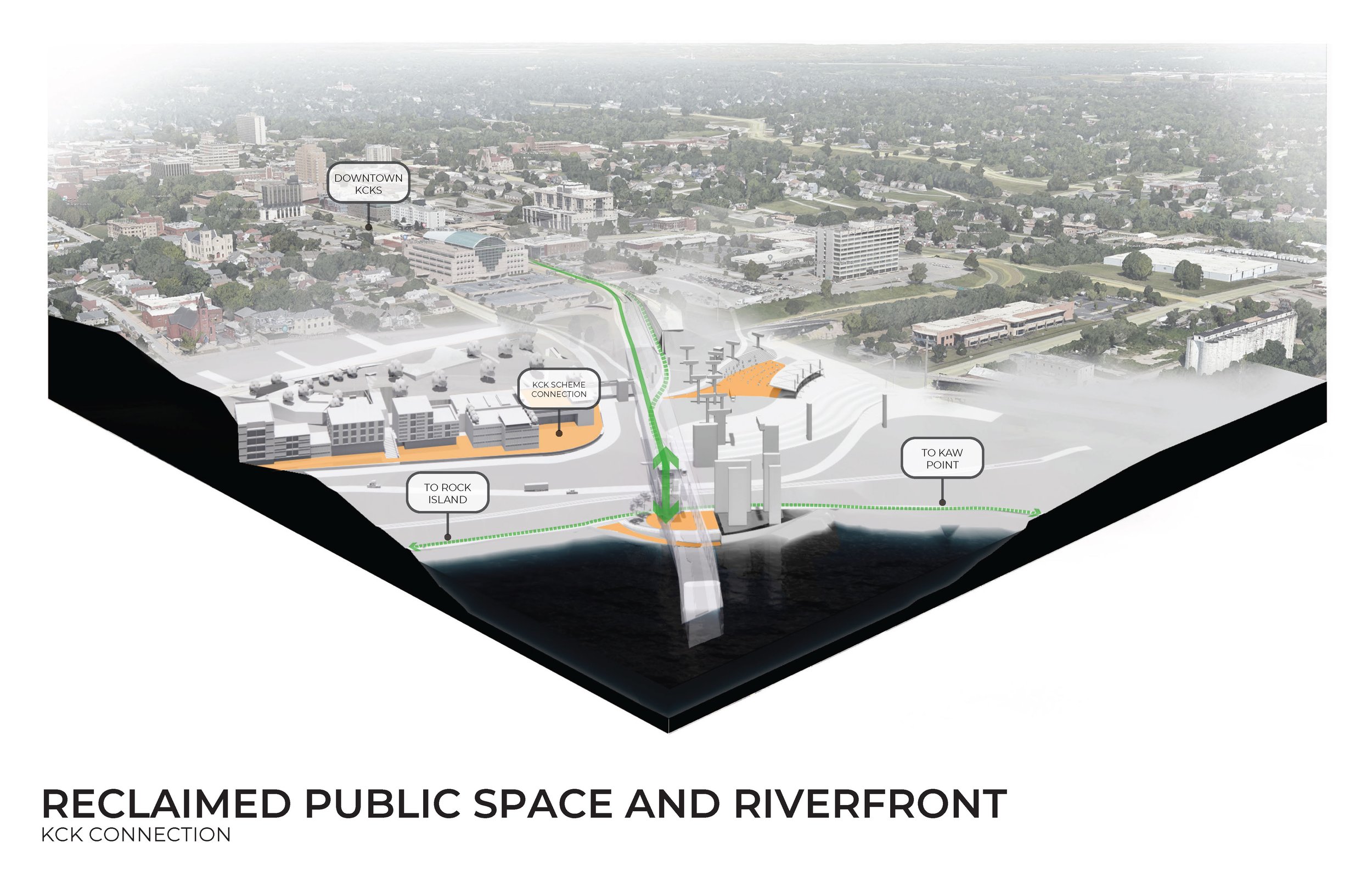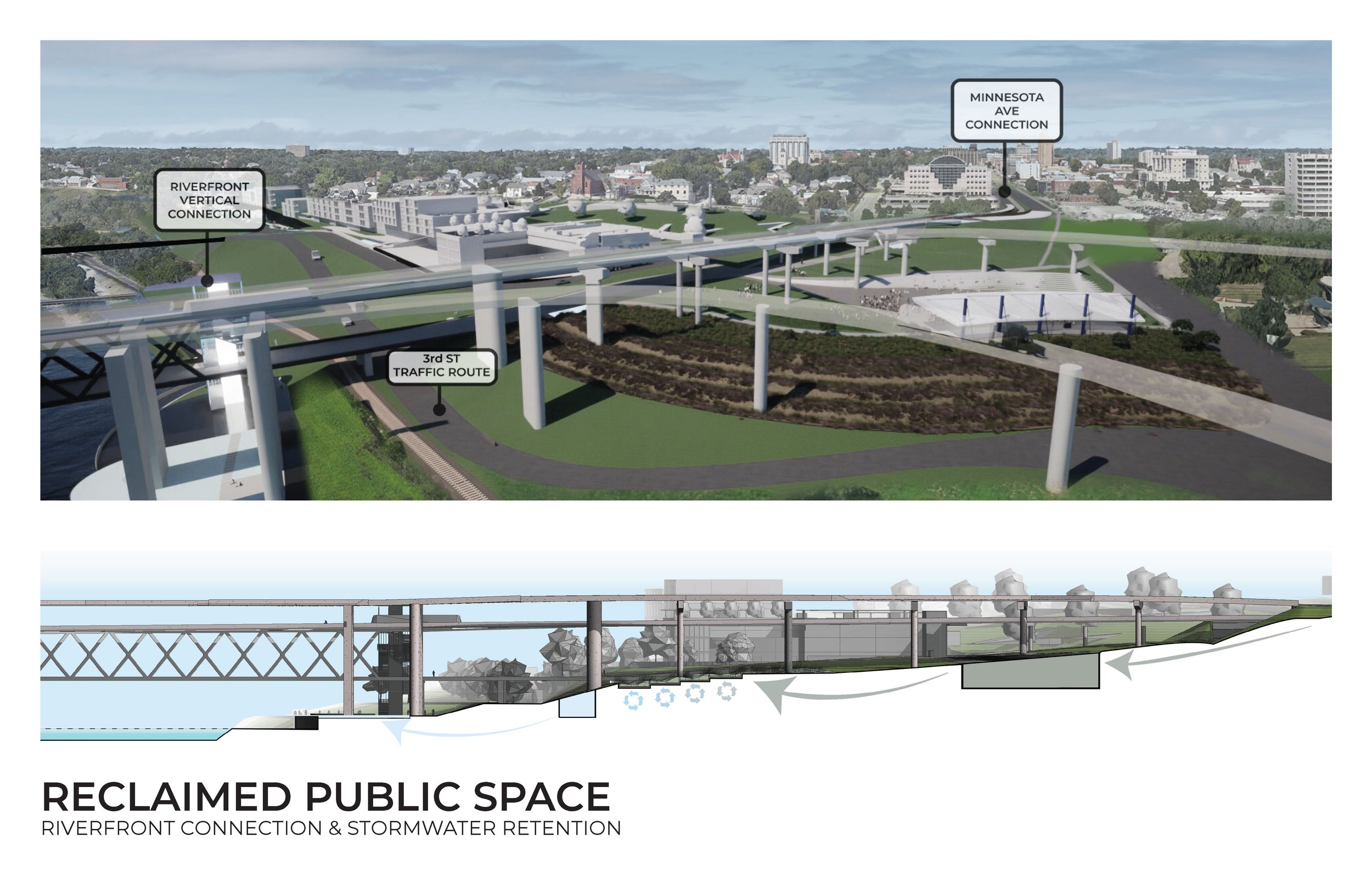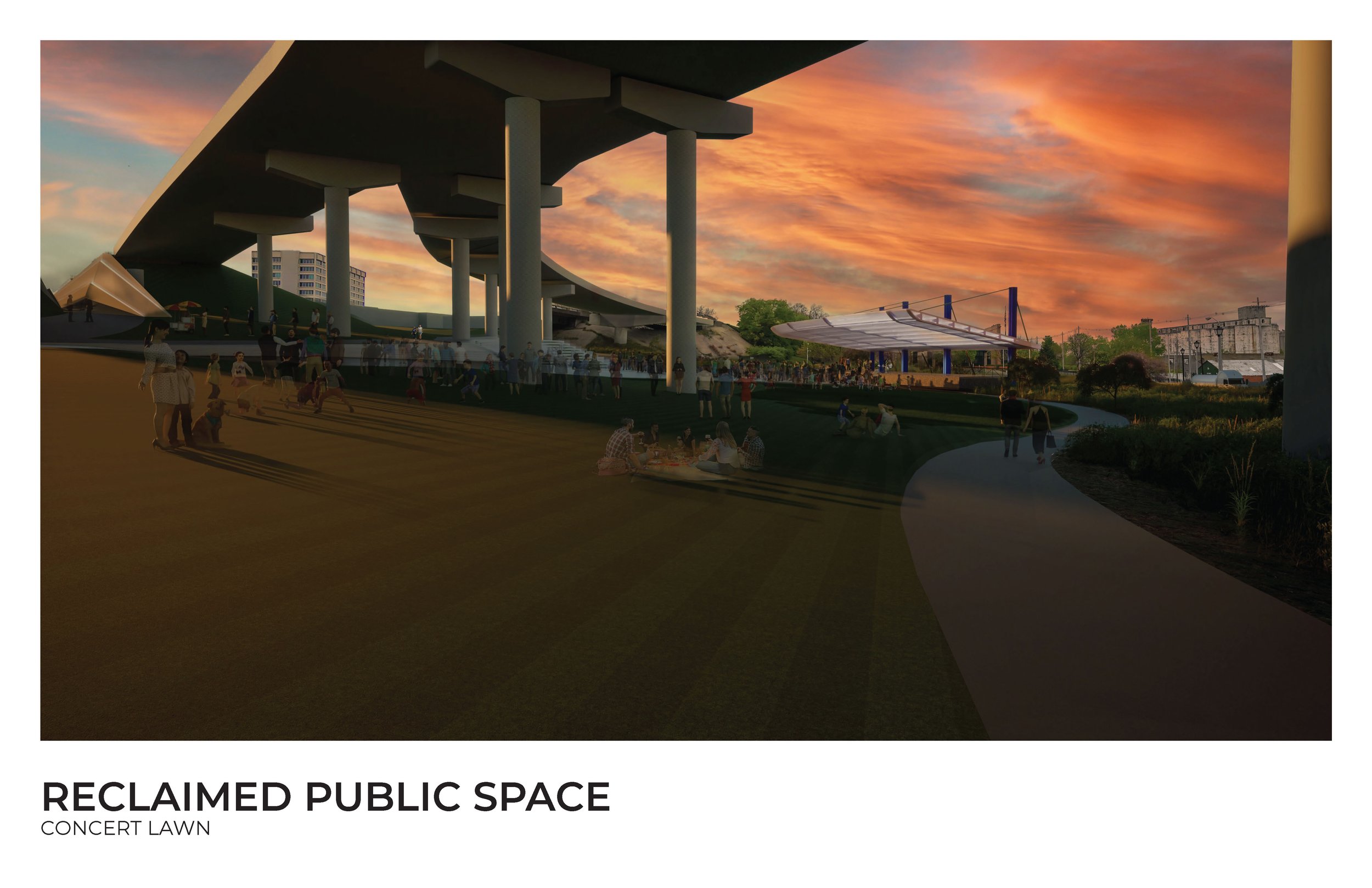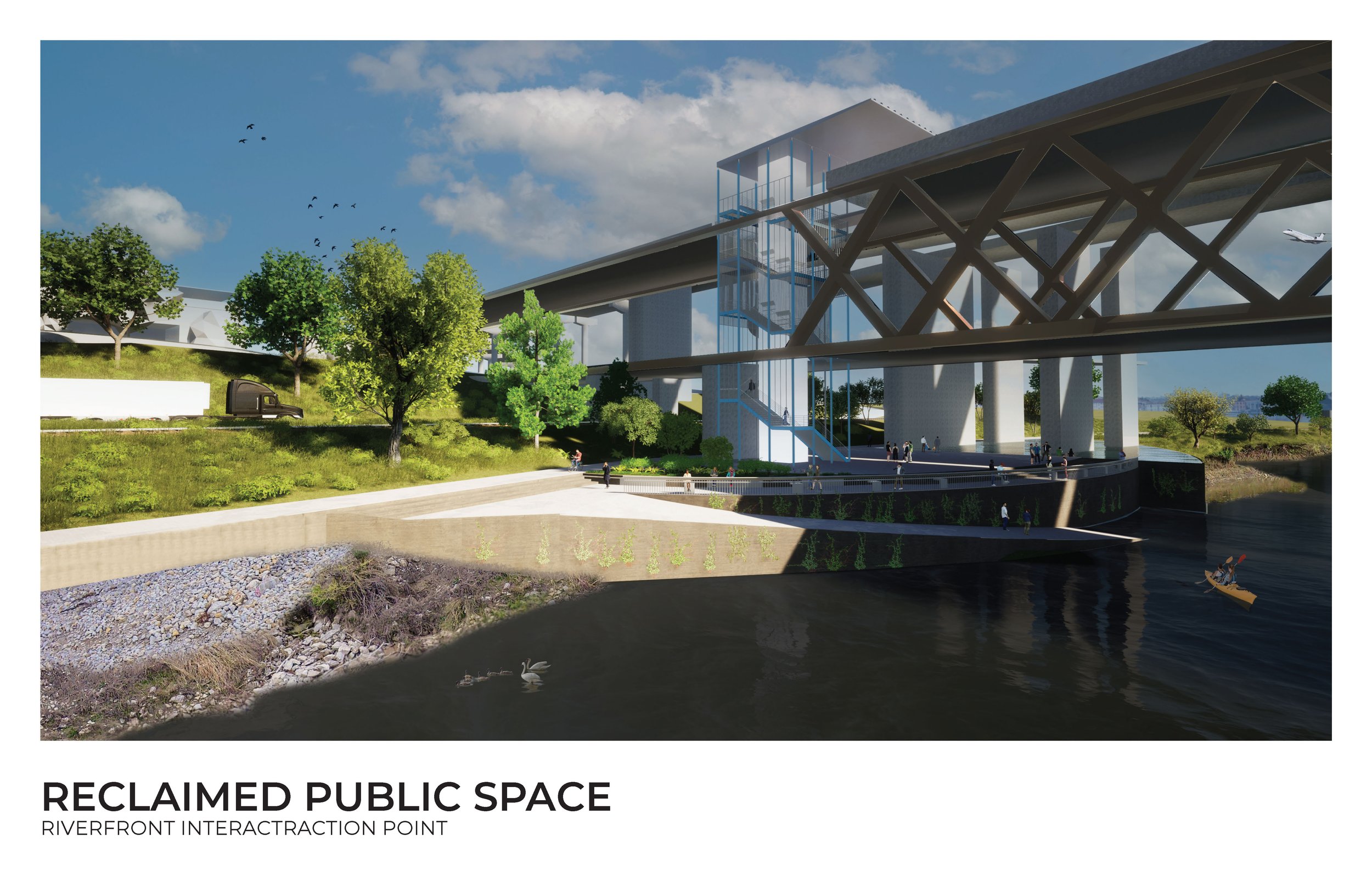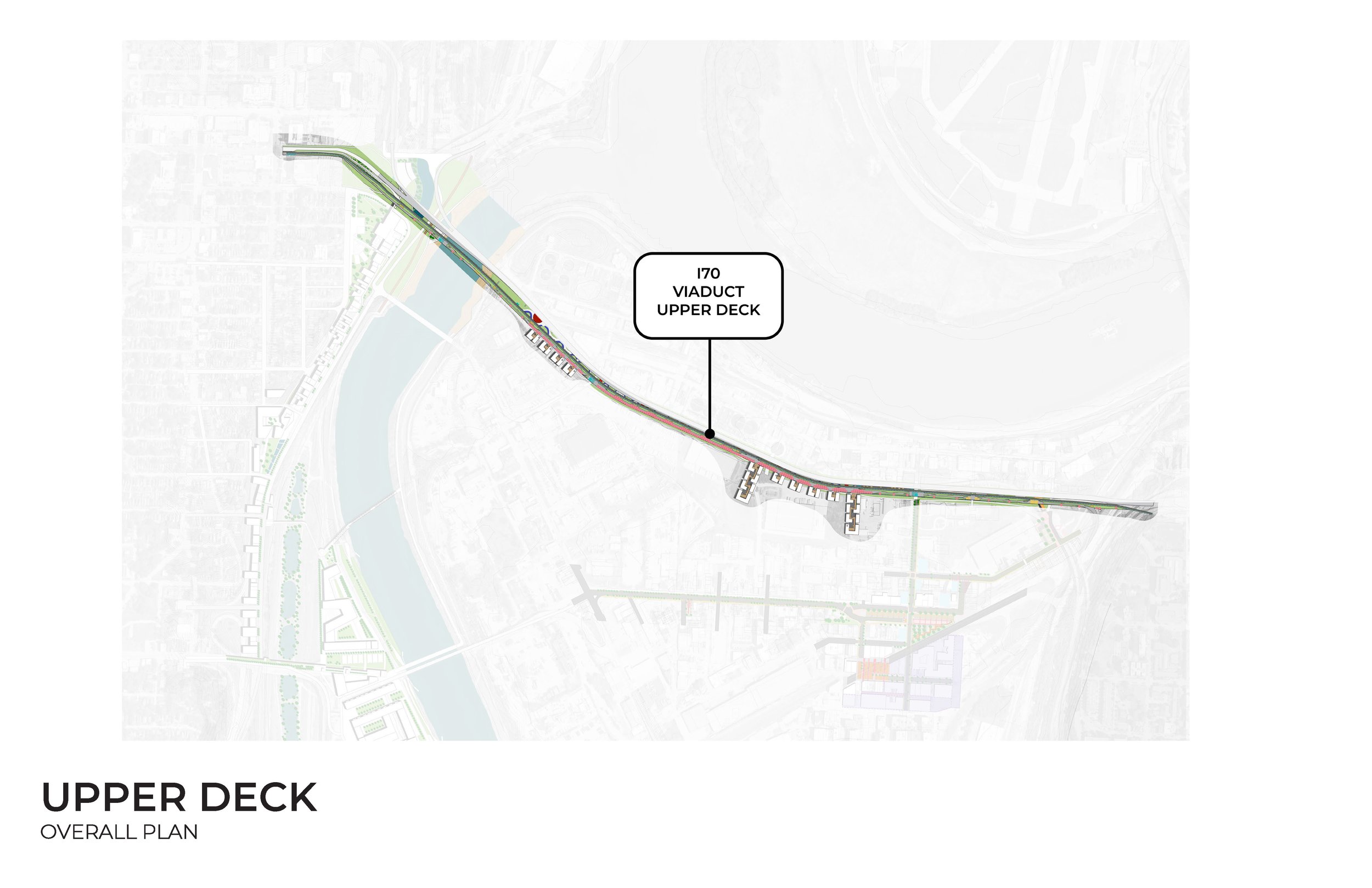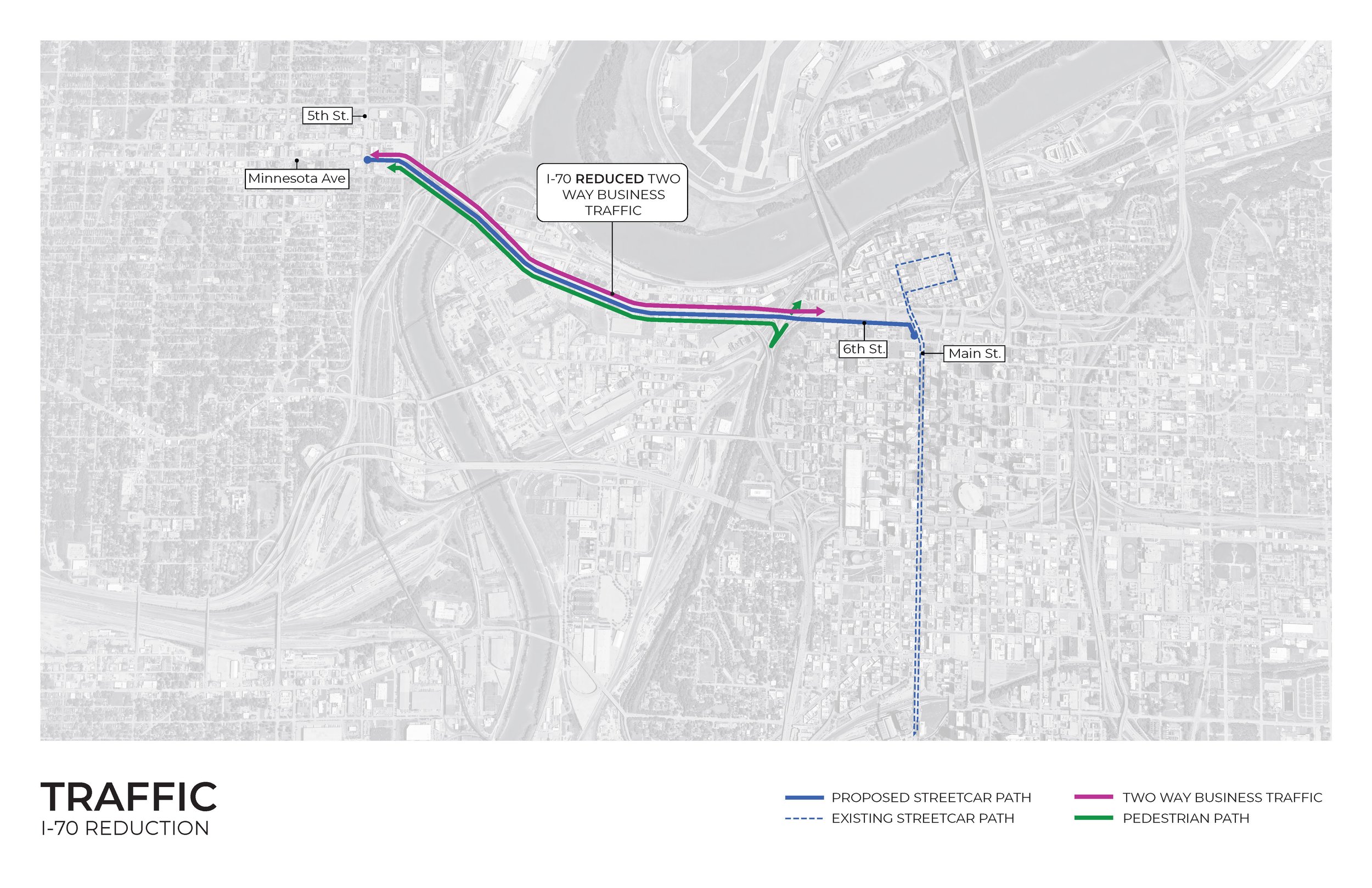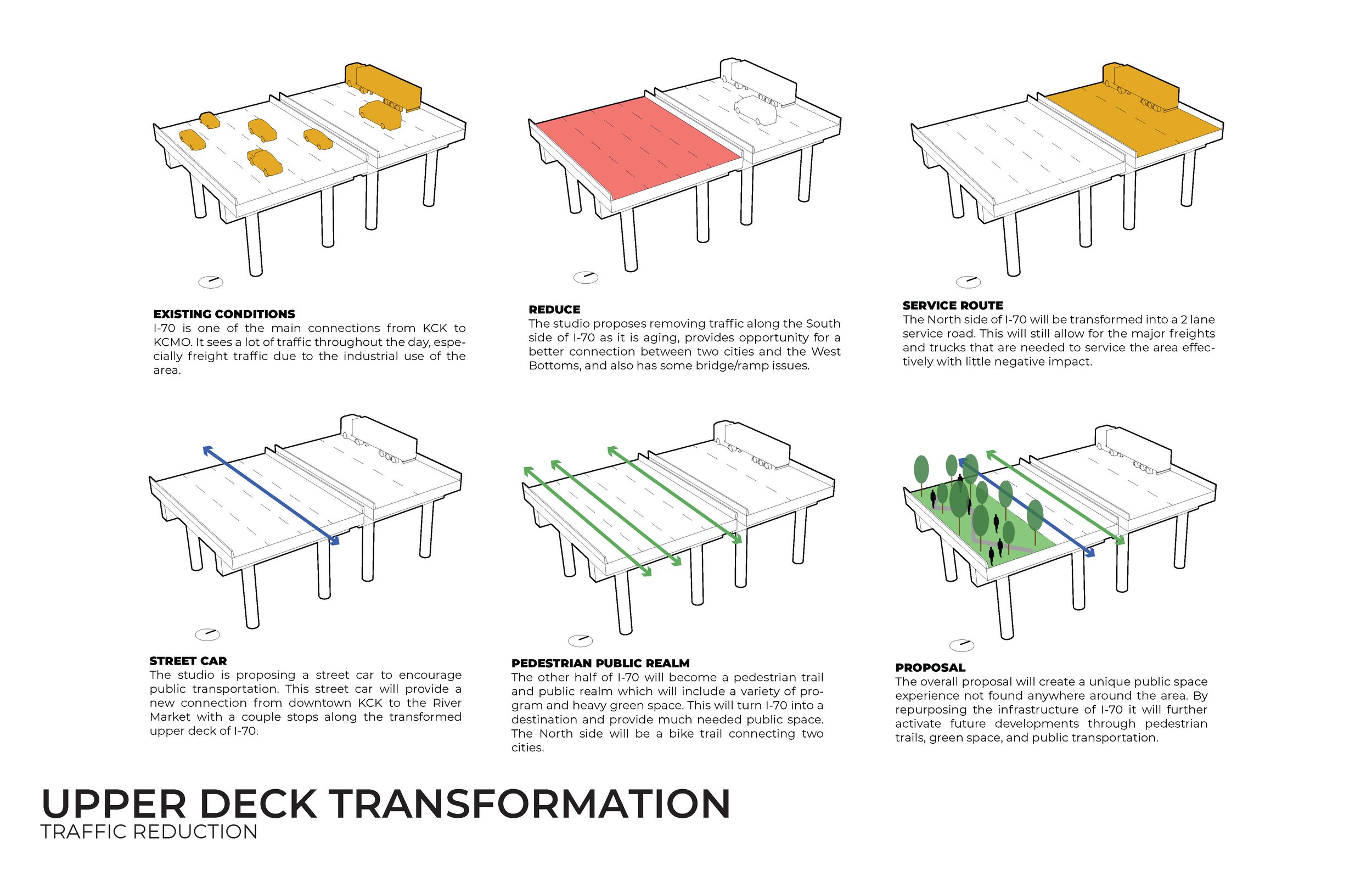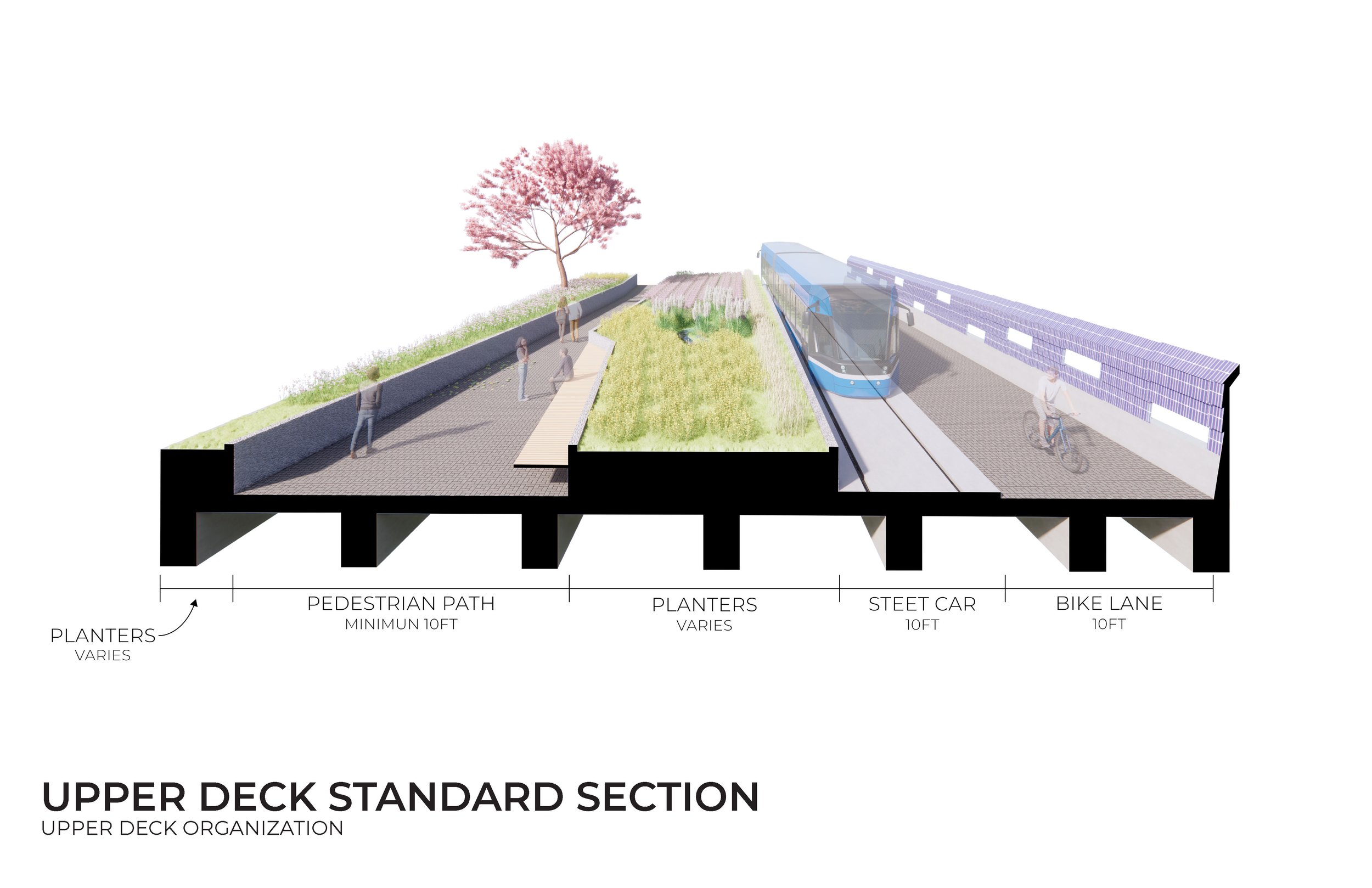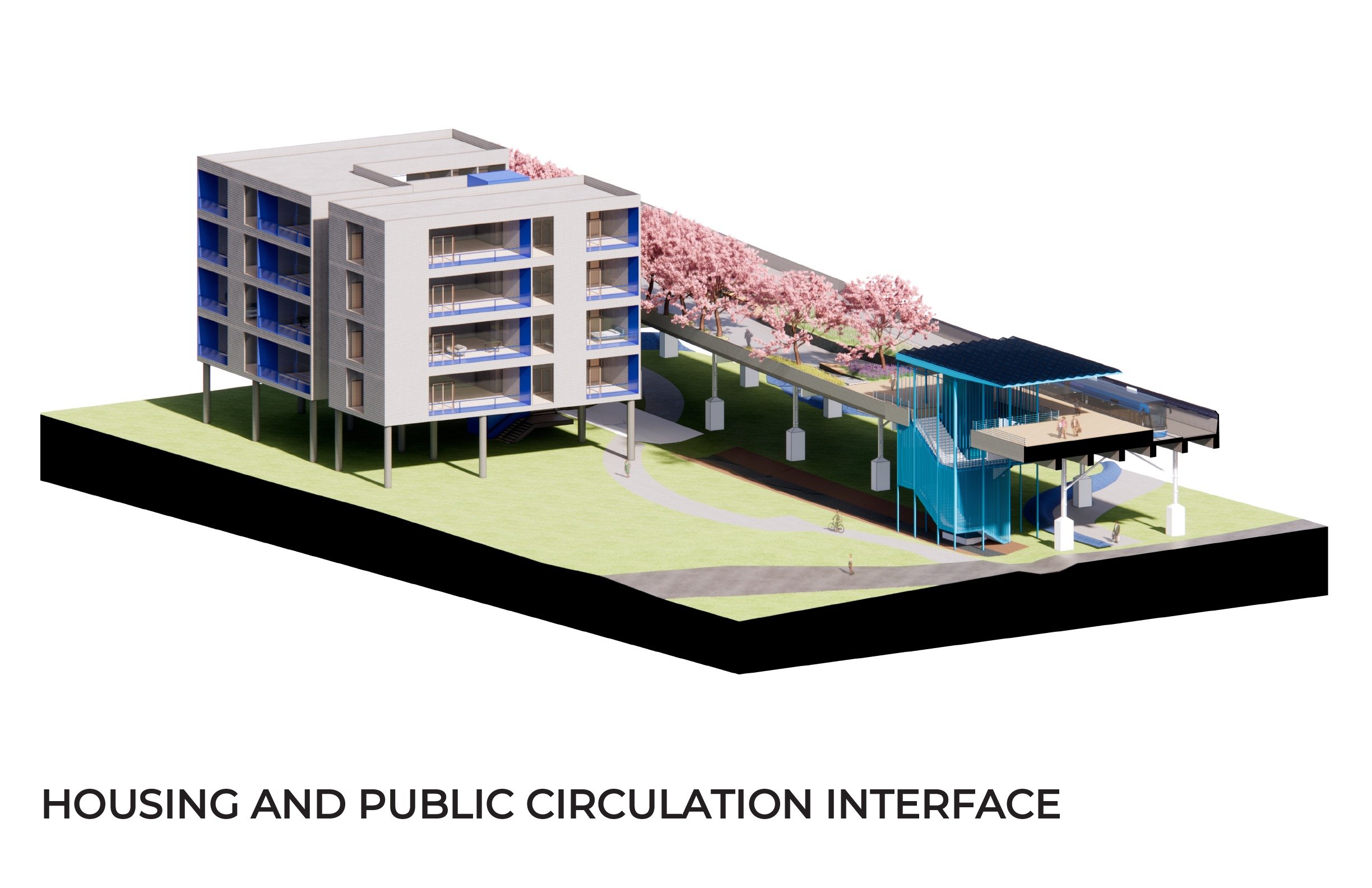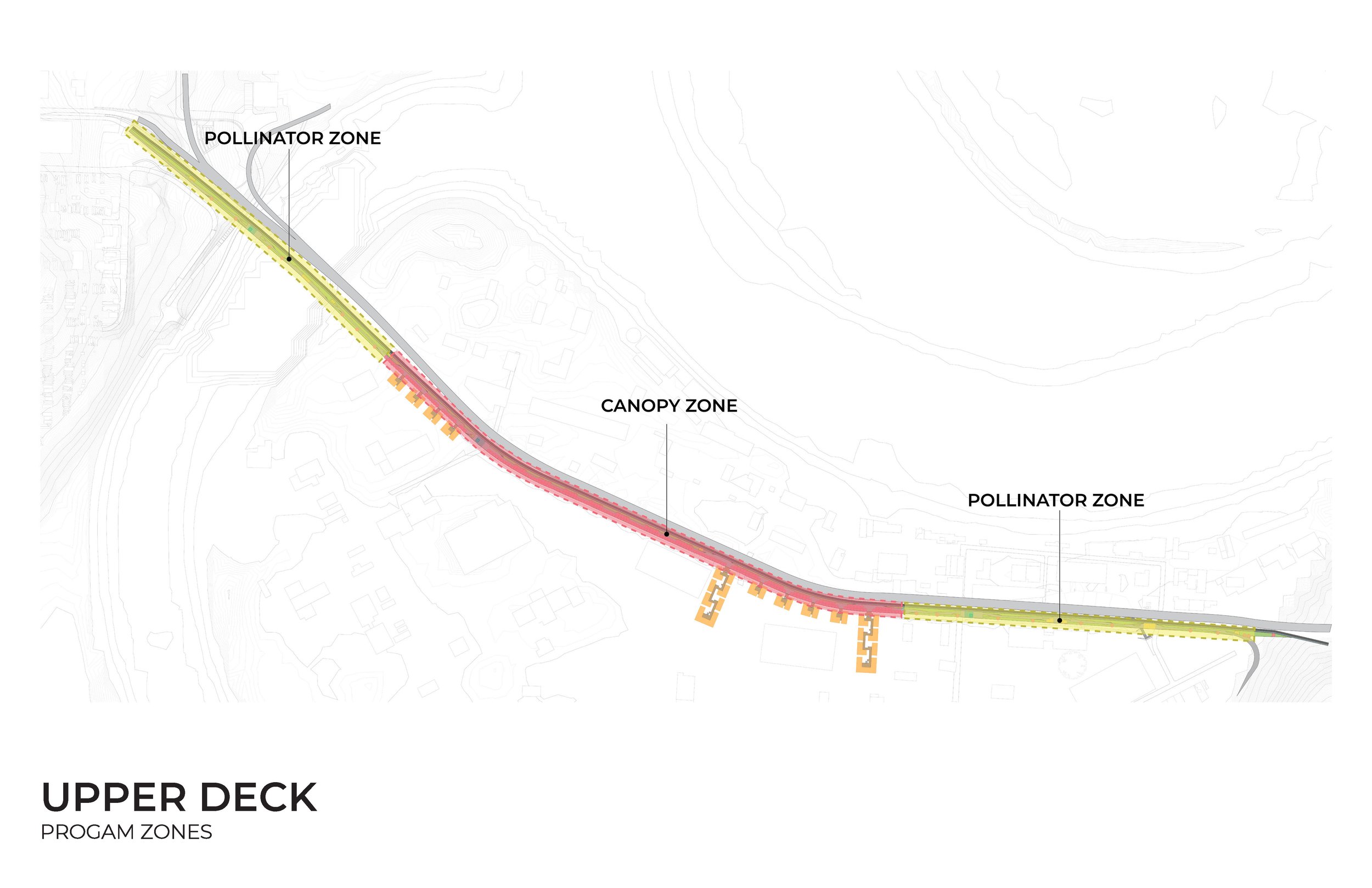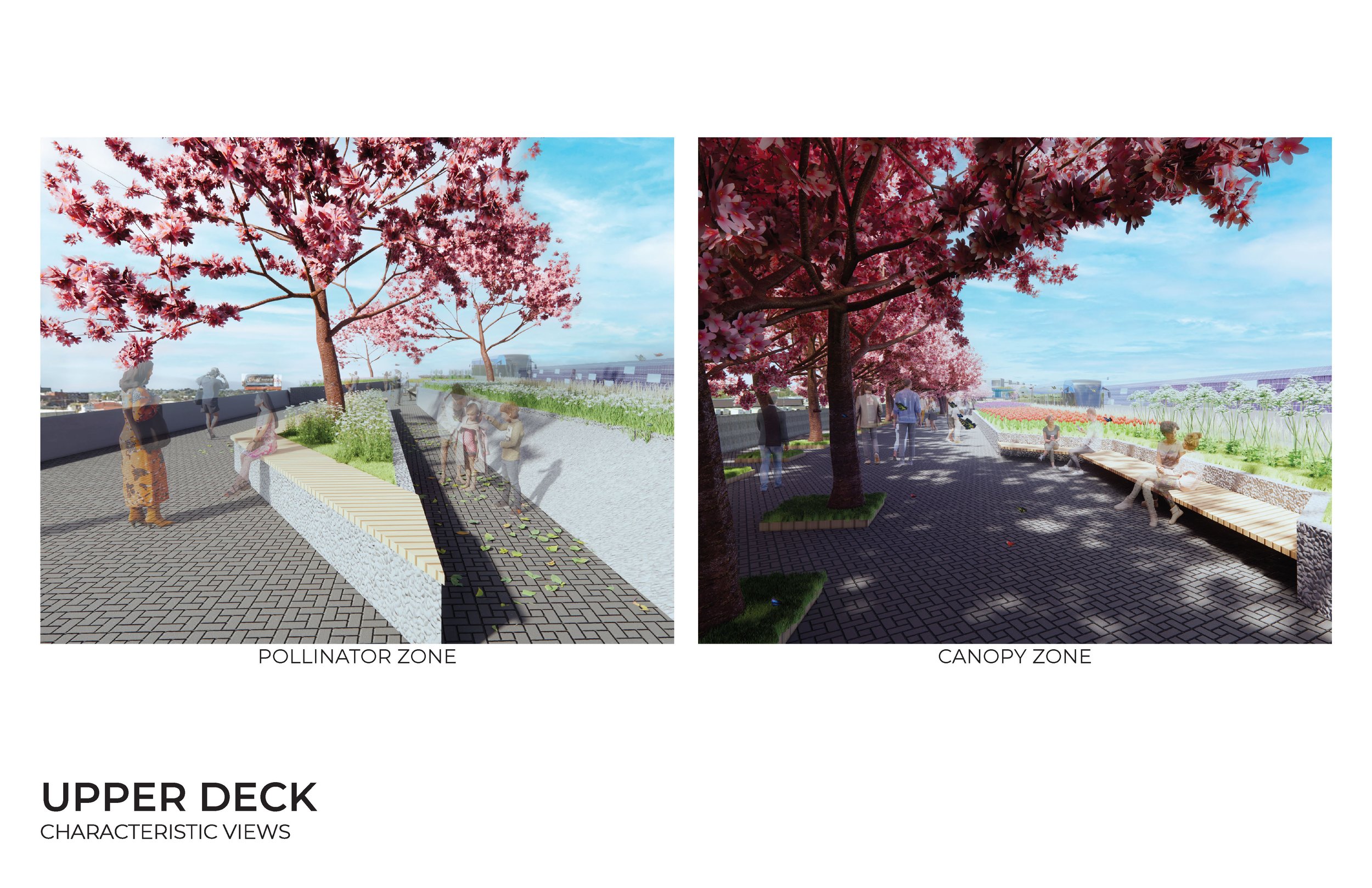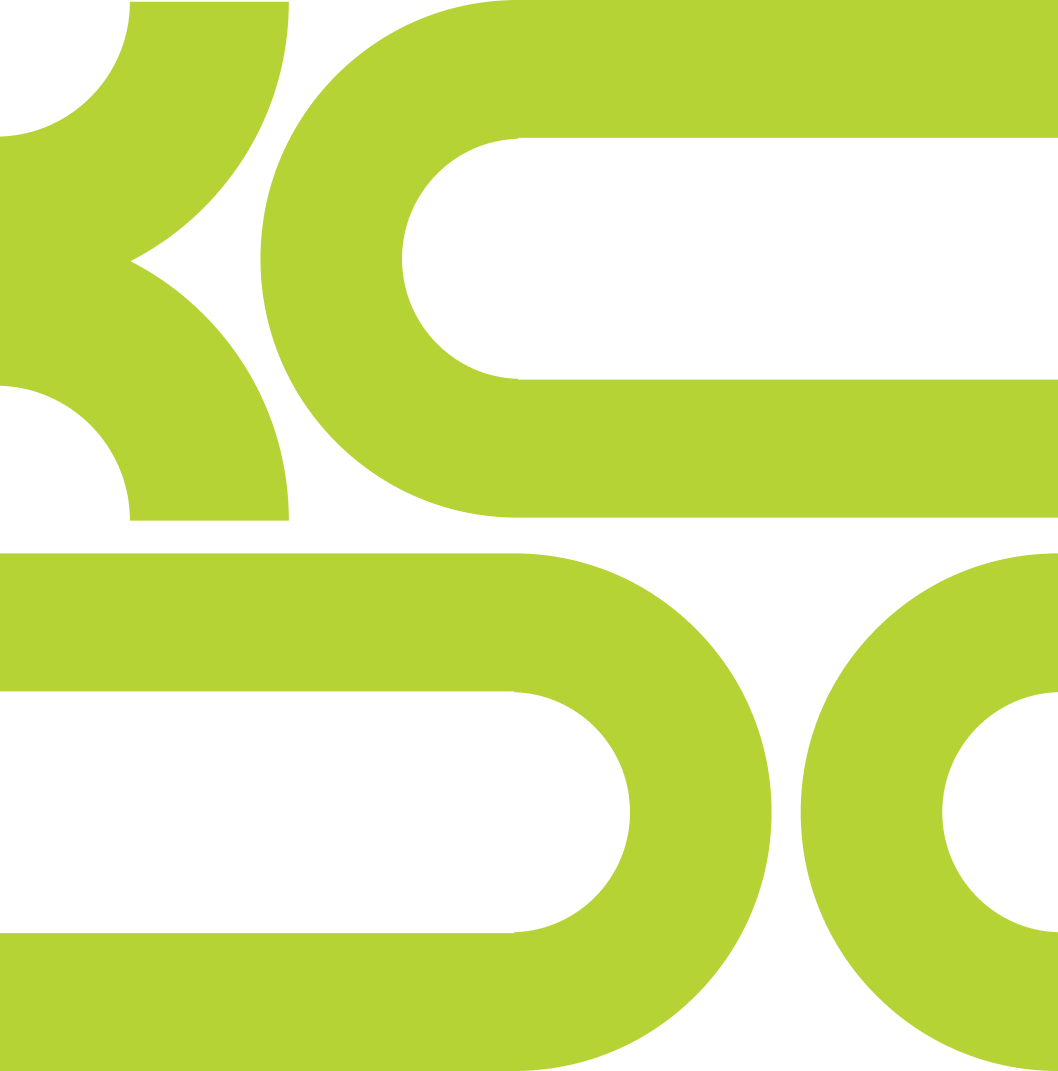West bottoms in three parts 2022-2023 vision study
I-70 study area
Design explorations in this project sections were based on the premise and speculations about the possibilities of reducing and transforming the flow of interstate traffic which is arguably excessive in the West Bottoms area and opening up perspectives for rethinking and repurposing residual road infrastructure into a public amenity while converting it into an environmental asset rather than a liability. Based on a larger context of traffic flow patterns and access priorities, the design proposes to divert the majority of the pass-through traffic to I-670 and reduce the I-70 north loop to I-70 business designation to ensure adequate freight access and scaling down the road profile to a single, two-way deck. This would allow a reclaim and repurpose of the southern deck of the I 70 viaduct that connects two downtowns into an elevated, linear green public space and public transportation/streetcar link creating an unprecedented and critical public amenity.
The design proposal embodies three constituting parts: the upper deck; the ground-level deck underside and the Kansas River interface. Each of these parts has its specific objective but they are also conceived and designed as an integrated whole whose purpose is to capitalize on the potential of the spontaneous qualities of the residual infrastructural space towards creating a new sense of urbanity. In addition to providing a linear green public space and public transportation corridor, the upper deck performs restorative environmental functions by capturing CO2, reducing the heat island effect, extending the natural habitat, and providing stormwater management. The ground-level deck underside is primarily conceived as a linear public room that capitalizes on the unique qualities of the found infrastructural space transforming it into a series of programmatic amenities that facilitate public life from commerce to recreation and leisure, offering an unprecedented urban experience and a source of the place identity. In developing both elements of the repurposed infrastructure, the design also looks into the strategy for creating housing development that interfaces and grounds itself into the infrastructure as its constituting part in opposition to the industrial land context that surrounds the I 70 viaduct, allowing for a juxtaposition of opposites that generates a different kind of urban energy.
Finally, the Kansas River interface part is investigating the possibility of reclaiming the residual “no man’s land” created by the series of elevated road interchanges and transforming it into a formal public space and a working green infrastructure that reconnects the downtown Kansas City with the long abandoned riverfront, providing a missing dimension of the urban order that weds the city to its point of origin.

